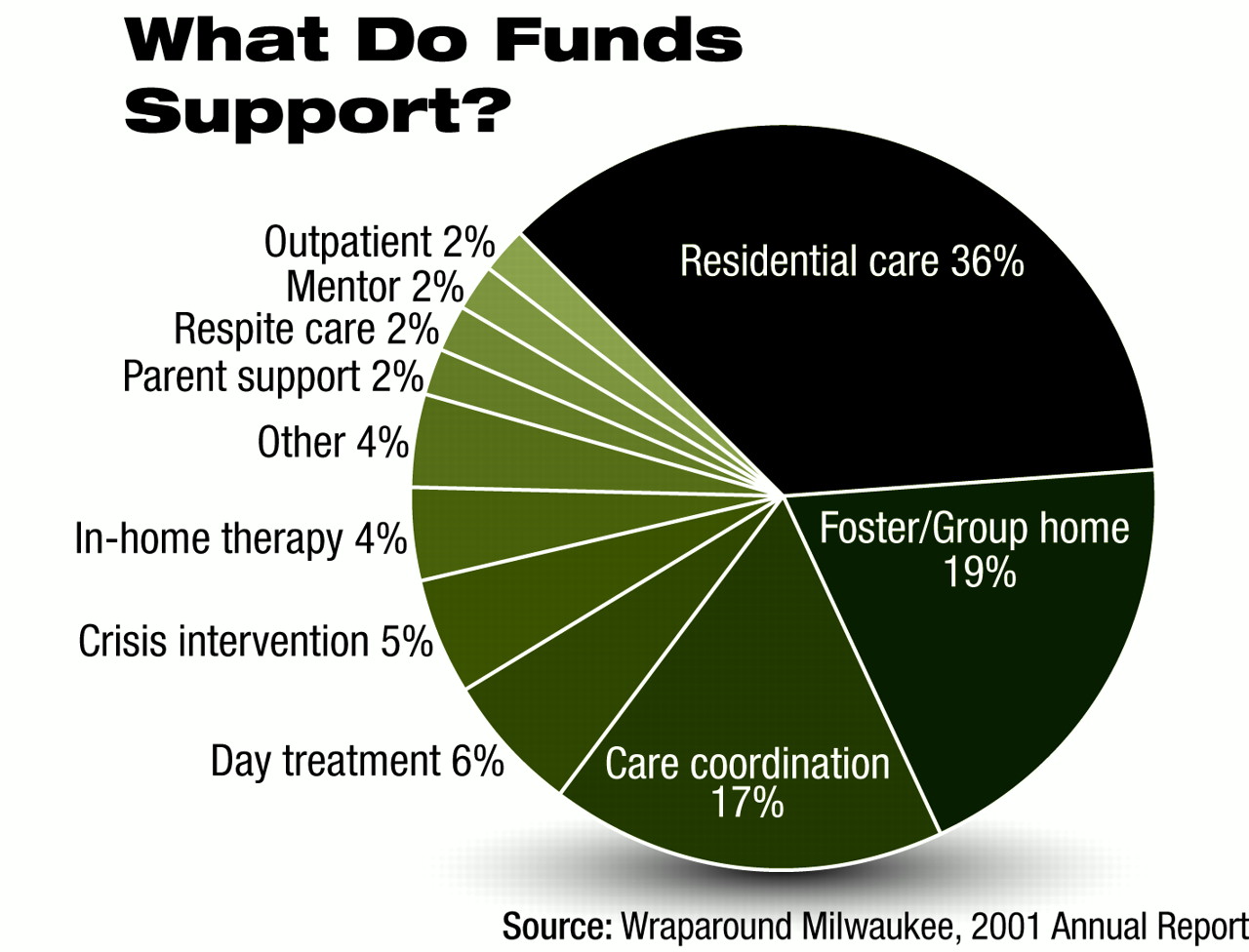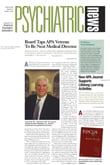In 1994 the Milwaukee County Human Services Department received a five-year grant from the Center for Mental Health Services (CMHS) to bring about system reform in the provision of mental health services to youth with severe emotional needs and their families.
That grant resulted in the 25 Kid Project, which was targeted to 25 youth who had been placed in residential treatment centers. When the project started in 1996, more than 360 young people were in placement each day in the county at a cost of more than $18 million a year.
The goal of the pilot project was to demonstrate that these children could be successfully returned to their homes or those of relatives and maintained there at a cost less than that of residential treatment.
Project team members offered each child and family an individualized package of services tailored to their specific needs.
Within 90 days, 17 of the youth were returned to the community. Eventually, seven entered foster homes, and the remaining 17 were successfully returned to their families. Only one youth could not be returned to the community.
By 1998 the program, named Wraparound Milwaukee, had expanded to 650 youth and begun to demonstrate impressive results.
Bruce Kamradt, director of the Children’s Mental Health Services Division for Milwaukee County, wrote in the May-June 2000 Juvenile Justice that the use of residential treatment had decreased 60 percent since Wraparound Milwaukee had begun. Inpatient psychiatric hospitalization had dropped by 80 percent. The average overall cost of care per child had decreased from more than $5,000 a month to less than $3,300 a month.
The average score on the Child and Adolescent Functional Scale improved significantly. The average score at the time of enrollment was 74, at the high range of impairment. One year after enrollment it was 48, a moderate level of impairment.
Recidivism rates also showed improvements across six measures, such as assaults and drug offenses.
The philosophy behind this success story sounds simple.
Milwaukee Wraparound’s Medical Director Clarence Chou, M.D., told Psychiatric News, “We look for reasons to keep kids with their families instead of trying to find justifications for taking them away. We think they are better served when the family receives treatment and services together than when the child is treated alone in an institution.”
The youth are in the program as a result of court action.
Implementation of this concept, however, requires coordination of the work of 230 agencies offering 80 services. These include such services as mentors, tutors, respite care, and transportation, as well as more conventional services such as family therapy and inpatient psychiatric care.
Care coordinators, who work with a ratio of one coordinator to eight families, are key to the success of the program. A coordinator works with a family to identify their natural supports, such as relatives, church members, and friends, and assembles a child-family team made up of those people and staff members from child welfare or probation agencies.
The coordinator helps the team to identify necessary services, develops a care plan, arranges for service delivery, and serves as a constant source of support for the child and family.
The program uses a provider network that pays agencies on a fee-for-service basis, allowing coordinators to contract for whatever an individual family needs.
“The money has to follow the family,” Chou said.
Chou, however, who is a child psychiatrist, is a salaried employee of Milwaukee County. “It’s important that staff members have no profit motive. A salaried position allows us the flexibility to do what’s necessary for the patient.”
He can see a patient four or five times a week if necessary and take time to visit with families in their homes. In contrast, he does not have to worry about the expense of missed appointments or insist that a child come at the same time each week.
“It’s like real life,” Chou said. “Change doesn’t come about at regularly planned intervals. There are big steps and times when no progress is apparent.”
He believes that his medical training is particularly important with this group of patients. “These kids have also been underserved in terms of their other medical needs,” he observed.
Demographics suggest the multiple challenges they face. In 1998, 53 percent of the families served were at or below the federal poverty level. Twenty-four percent of the parents had been incarcerated and 22 percent of families had documented mental illness. One in eight of the young program participants had attempted suicide.
“These are families who often have been burned by the system,” Chou said. But, he insists, if families believe team members care about their child, they will “come around.”
In 2001 data showed that 65 percent of the children at entry had a diagnosis of either conduct disorder or oppositional defiant disorder. Forty-nine percent had a mood disorder, and 46 percent were diagnosed with attention-deficit/hyperactivity disorder.
In 2001, when Wraparound Milwaukee served 869 children and their families, the primary sources of funds were the Bureau of Milwaukee Child Welfare and Delinquency and Court Services. Those sources, which combine federal, state, and local funding, made up 60 percent of the service budget of $24,616,073. Medicaid (31 percent) and Medicaid crisis funds (6 percent) made up the next largest shares.
The chart at left shows the percentages of expenditures by type of service.
Although the highest single expenditure was residential treatment, the cost of that service fell every year for the past four years. For 2001, the percentage dropped 8 percent from 2000.
In 2001 the Office of Juvenile Justice Delinquency Prevention featured Wraparound Milwaukee in a national satellite teleconference and film, and CMHS chose it as one of two national host learning communities to assist other federal grantees.
This year the President’s New Freedom Commission on Mental Health scheduled two presentations about Wraparound Milwaukee as part of an effort to identify successful models of mental health services.
Information about the program is posted on the Web at www.wrapmilw.org. ▪

